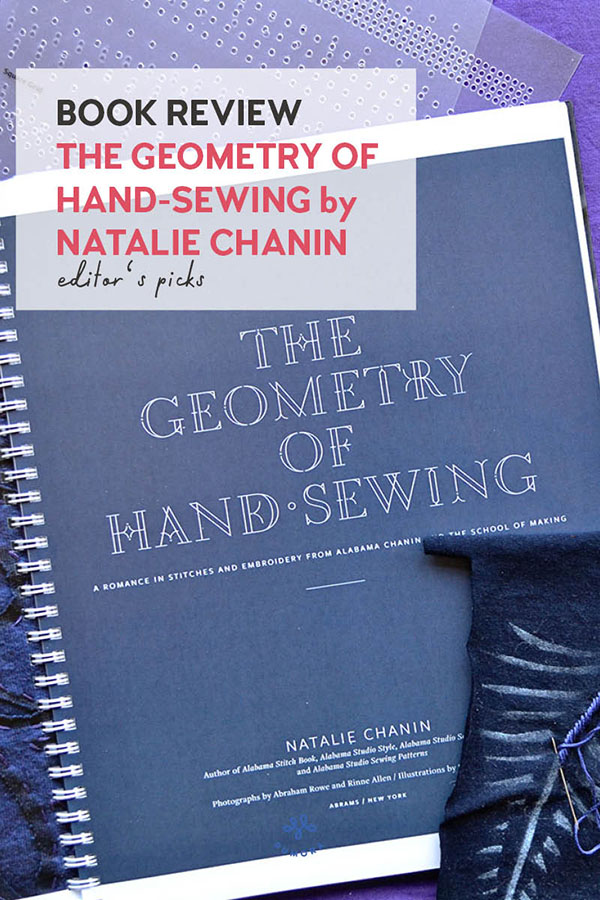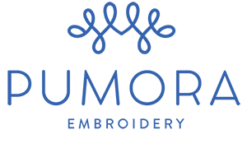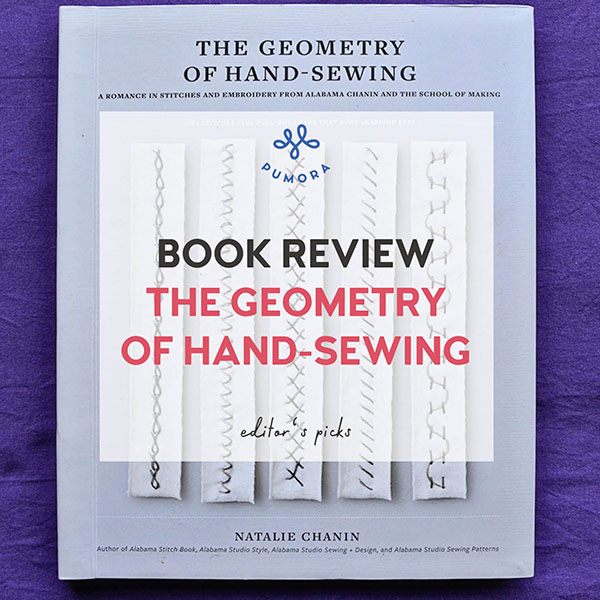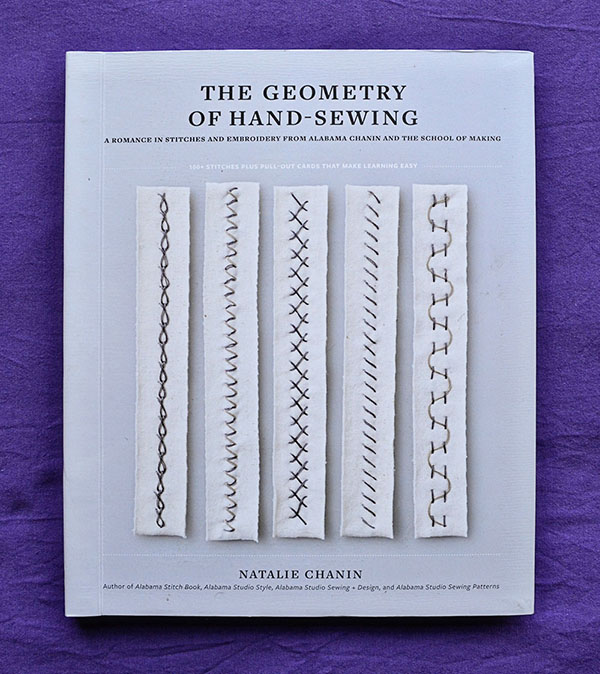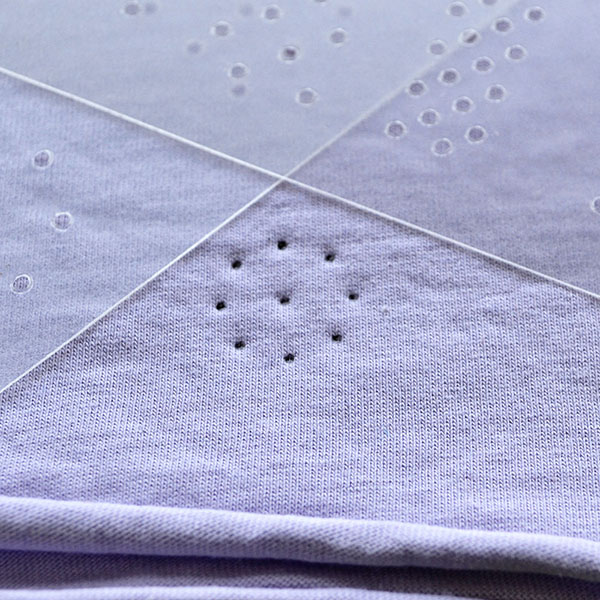Disclaimer: unpaid avertisement – book review
I was first introduced to Natalie Chanin in 2011 when I watched her speech at the HelloEtsy conference in Berlin. Sadly I wasn’t there live, it would have been even more inspiring. She spoke of her own creative journey in fashion design, taking time, coming home and most of all the importance of community. I can’t find the video anymore but here is an article that sums up her speech beautifully if you need some inspiration, too.
It hit me at a time when I just left university to become self-employed with Pumora. I was working alone from home and did not really know how to get this all working. And there came Natalie talking about overcoming your fears and jump (check, did that) and most important of all: create a community around you. Be of service to your community and let the community help you. It hit a chord with me. After seeing all the beautiful embroidered and hand-sewn creations of Alabama Chanin she won my heart entirely.
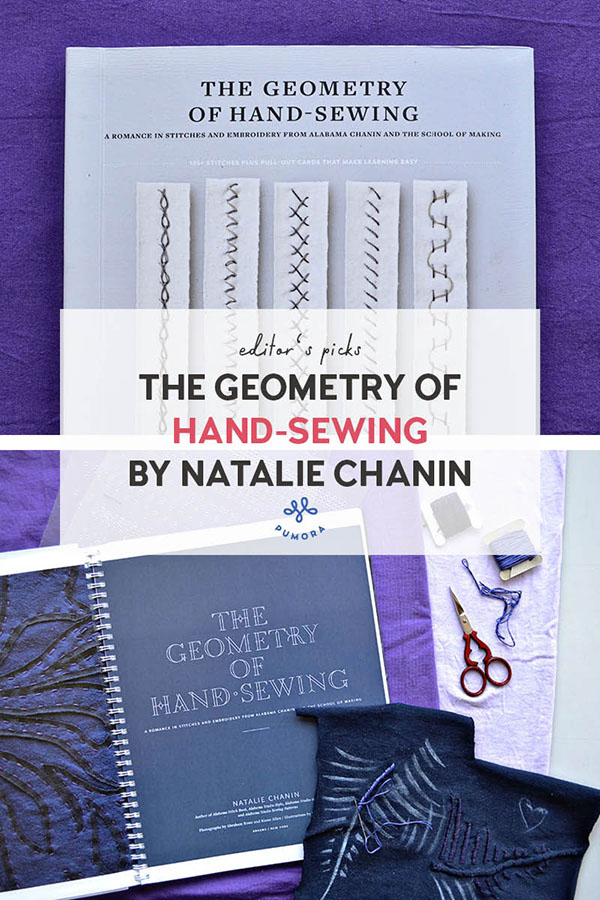
In a world where machines are the standard of production, it’s heart-warming to see that the working with hands still matters. I love how Natalie and her team stretch the boundaries of hand-sewing. They are using basic embroidery methods to make modern designs and combine techniques that form such an elegant and unique piece of art.
Handcrafted items specially created with time-intensive methods like hand sewing and embroidery are very expensive. This is why I love that Alabama Chanin shares their knowledge with so many people. People who enjoy making these garments and could not afford a custom-made 1000$+ dress. I already own the Alabama Stitch Book from which I made the corset with red stretchy velvet. So when I heard that Natalie made a new book last year writing about all the embroidery techniques they use I just bought it right away!
The Geometry of Hand-Sewing
The book is structured in 6 chapters. Natalie covers all the basic things like tools & materials, the basic stitches, enhancing stitches, manipulating grids and how to create patterns with multiple stitches. What I loved to read was that she included lots of examples. She listed all the materials (like which colors the fabric/threads have and which dye color and beads they used) and techniques used for them in the index of design choices. This is really great to see as you don’t have to guess anything by the pictures and can jump right into sewing.
Each embroidery stitch is explained with a graphic and shown with front and back side! The stitches are sorted by the structure they share e.g. stitches that are single lines like back stitch, running stitch, stem stitch or diamond grid (alternating points in 2 rows) like arrowhead stitch, zigzag chain stitch or closed feather stitch.
As a bonus, you’ll get 2 plastic pages with holes in a grid. They are great for trying out stitches and understanding the geometry of each stitch type. You can also use them as a stencil to mark your points. Which is great if you are struggling with balancing stitch lengths and widths. The grids are referenced on the embroidery stitch explanation pages so you can easily find them on the plastic pages.
The book is spiral bound and sturdy. Spiral binding is great to lay the book flat while embroidering because it always stays open. What is not so great about spiral binding, in this case, is that the pages are quite fragile at the binding and might rip out if not turned carefully.
Who is this book for?
It doesn’t matter if you are new to embroidery or already have lots of experience in embroidery. The Geometry of Hand-Sewing is more than just a stitch book. It helps you understand the structure of each stitch and teaches you how to think outside the box. Especially the chapter about combining techniques to form patterns and textures is enlightening and elevates this book from a pure reference book to a book about the design process and all the possibilities you can explore.
I often read that using traditional embroidery stitches is more craft than art. That you can express more freely in embroidery when not using traditional stitches but stitch freely. This often means using straight stitch like you would use a pen in drawings. And although this has a place, too, I love how The Geometry of Hand-Sewing shows the versatility and modern approach to traditional embroidery stitches. They are not there to restrict your options. They are tools that open up a world of unlimited combinations and variations.
Alabama Chanin Bluprint Courses
I don’t get anything from recommending these courses – I’m really just a fan 😉
You might have guessed that I’m a huge fan of Alabama Chanin and Natalie’s work. If you learn better with videos you might like the Craftsy course that is based on the book: The new embroidery: simple geometry beautiful stitches. I’m taking that exact course right now and it’s great to see someone execute the techniques from the book. Sometimes it’s just better to see where exactly the needle has to go instead of abstract graphics.
Other courses of Natalie Chanin are:
And a couple of smaller courses on Creative Bug
Do you want more tips and tricks on hand embroidery?
Join the Tutorial Alert! It is a biweekly newsletter that contains information about new tutorials & articles on Pumora, tips & tricks, and promotional content like new embroidery patterns or special discount codes.
